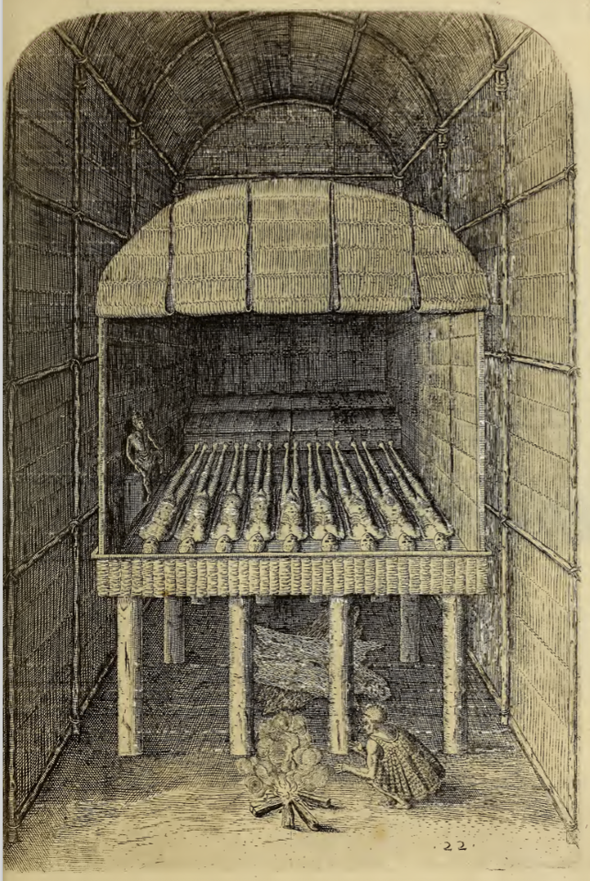
European Illustrations of Indigenous Peoples of the Americas
Historically scholars have claimed that when Christopher Columbus stumbled upon the Caribbean islands in 1492, he unwittingly changed the course of European history. This event led to an influx of western European colonizers and the violent usurpation and re-settling of the Americas, and a biological exchange that decimated the Indigenous populations. The ramifications of the genocide and conversion of the Indigenous populations of the Americas, as well as the forced labour in the form of slaves to further Europe’s grip on American territories, continue to resonate today and have become entrenched into the very fabric of these continents’ societies.
At present, the images in this collection mainly feature illustrations by John White’s voyage into the Roanoke colony of Virginia (now North Carolina), an English traveler active during the sixteenth century, and Jacques le Moyne, a French member of Jean Ribault’s expedition to Florida. According to Abigail Tucker’s article, “Sketching the Earliest Views of the New World,” while John White’s watercolours were not very precise, they functioned as a pictorial menu of sorts, especially as crops suffered during Europe’s mini ice age. Illustrations like the ones below, found in the Johann Wechel 1590 edition of Thomas Hariot’s “A Briefe and True Report of the New Found Land of Virginia,” served to entice Europeans to dare cross the Atlantic and help compete against established colonizers like Spain (Tucker, 2008).
Works Cited: Tucker, Abigail. “Sketching the Earliest Views of the New World.” Smithsonian Magazine, December, 2008.
Der ander Theyl, der newlich erfundenen Landtschafft Americæ, Von dreyen Schiffahrten, so die Frantzosen in Floridam (die gegen Nidergang gelegen) gethan. Eine unter dem Hauptmann H. Laudonniere, Anno 1564. Die ander unter H. Ribald 1565. Die dritte, unter H. Guorguesio 1567. Geschehen. - Johann Wechel, Frankfurt am Main (1591)
De Insulis inuentis - Jakob Wolff, Basel (1493)
In laudem Serenissimi Ferdinandi Hispaniarum Regis, Bethicæ & regni Granatæ, obsidio, victoria, & triumphus. Et de Insulis in mari Indico nuper inuentis - Johann Bergmann, Basel (1494)
Isole trovate novamente per el Re di Spagna - Giovanfillippo de Lignamine, Florence (1495)
De ora antartica per regem Portugallie pridem inuenta - Matthias Ringmann, Strassburg (1505)
Uslegung der Mercarthen oder Cartha Marina Darin man sehen mag, wa einer in der welt sey, vnd wa ein ietlich Land, Wasser und Stat gelegē ist. Das als in dē büchlin zefindē - Strassburg, Johann Grüninger (1525)
Warhaftige Historia vnd beschreibung eyner Landtschafft der Wilden, Nacketen, Grimmigen Menschfresser Leuthen, in der Newenwelt America gelegen, vor vnd nach Christi geburt im Land zu Hessen vnbekant, biß vff dise ij. nechst vergangene jar, Da sie Hans Staden von Homberg auß Hessen durch sein eygne erfarung erkant, vnd jetzo durch den truck an tag gibt.- Andres Kolben, Marburg (1557)
Warachtige historie ende beschrrivinge eens lants in America ghelegen, vviens invvoonders vvilt, naeckt, seer godloos, ende vvreede menschen eters sijn - Christophe Plantin, Antwerp (1558)
Rhetorica christiana ad concionandi, et orandi vsvm accommodata, vtrivsq facvltatis exemplis svoloco insertis; qvae qvidem, ex indorvm maximè deprompta svnt historiis. Vnde praeter doctrinam, svma qvoqve delectatio comparabitvr - Petri Giacomo Petrucci, Perugia (1579)
Histoire d’vn voyage fait en la terre dv Bresil, avtrement dite Amerique. Contenant la nauigation, & choses remarquables, veuës sur mer par l'aucteur. Le comportement de Villegagnon en ce païs là. Les meurs & façons de viure estranges des Sauuages Ameriquains: avec un colloque de leur langage. Ensemble la description de plusieurs Animaux, Arbres, Herbes, & autres choses singulieres, & du tout inconues par deça: dont on verra les sommaires des chapitres au commencement du liure - Antoine Chuppin, La Rochelle (1578)
Wunderbarliche, doch Warhafftige Erklärung, von der Gelegenheit und Sitten der Wilden in Virginia, welche newlich von den Engelländern, so im Jar 1585. Vom Herrn Reichard Greinuile, einem von der Ritterschafft, in gemeldte Landschafft die zu bewohnen geführt waren, ist erfunden worden, in verlegung H. Walter Raleigh, Ritter und Obersten dess Zinbergwercks, auss vergünstigung der Durchleuchtigsten unnd Unuberwindlichsten, Elisabeth Königin in Engelland - Johann Wechel, Frankfurt am Main (1590)
Histoire d’vn voyage faict en la terre dv Bresil, avtrement dite Amerique. Contenant la navigation, & choses remarquables, veuës sur mer par l'aucteur. Le comportement de Villegagnon en ce païs la. Les moeurs & façons de viure estranges des Sauuages Ameriquains: avec un colloque de leur langage. Ensemble la description de plusieurs Animaux, Arbres, Herbes, & autres choses singulieres, & du tout inco[n]nues pardeçà: dont on verra les sommaires des chapitres au commencement du liure - Antoine Chuppin, Geneva (1580)
A briefe and true report of the new found land of Virginia, of the commodities and of the nature and manners of the natural inhabitants. Discouered by the English Colony there seated by Sir Richard Greinuile Knight in the yeere 1585. Which Remained under the gouernement of twelue monethes, at the speciall charge and direction of the Honourable Sir Walter Raleigh Knight lord Warden of the stanneries who therein hath beene fauoured and authorised by her Maiestie and her letters patents - Johann Wechel, Frankfurt am Main (1590)
Admiranda narratio fida tamen, de commodis et incolarum ritibus Virginiæ, nuper admodum as Anglis, qui à Dn. Richardo Greinvile equestris ordinis viro eò in coloniam anno M.D.LXXXV deducti sunt inventæ, sumtus faciente Dn. Waltero Raleigh equestris ordinis viro fodinaru stanni præfecto ex auctoritate serenissimæ reginæ angliæ - Johann Wechel, Frankfurt am Main (1590)
Brevis narratio eorum quae in Florida Americae provicia gallis acciderunt, secunda in illam navigatione, duce Renato de Laudoniere classis praefecto. Anno M D LXIIII. Quae est secunda pars Americae. Additae figurae & incolarum eicones ibidem ad vivu expressae, brevis item Declaratio Religionis, rituum, vivendique ratione ipsorum - Johann Wechel, Frankfurt am Main (1591)
Merveilleux et estrange rapport, toutesfois fidele, des commoditez qui se trouvent en Virginia, des facons des naturels habitans d'icelle, laquelle a esté nouvellement descouverte par les Anglois que messire Richard Greinuile chevalier y mena en colonie l’an.1585. à la charge principale de messire Walter Raleigh chevalier surintendant des Mines d'Estain, favorisé par la royne d'Angleterre, et autorisé par ses lettres patentes - Johann Wechel, Frankfurt am Main (1590)
Collection PDFs
Latin
Admiranda narratio - Johann Wechel, Frankfurt am Main (1590) Pt. 1
Admiranda narratio - Johann Wechel, Frankfurt am Main (1590) Pt. 2
De ora antartica - Matthias Ringmann, Strassburg (1505)
Brevis narratio - Johann Wechel, Frankfurt am Main (1591) Pt. 1
Brevis narratio - Johann Wechel, Frankfurt am Main (1591) Pt. 2
Brevis narratio - Johann Wechel, Frankfurt am Main (1591) Pt. 3
De Insulis Inuesntis - Jakob Wolff, Basel (1493)
In laudem Serenissimi - Johann Bergmann, Basel (1494)
Rhetorica christiana ad concionandi - Pietro G. Petrucci, Perugia (1579) Pt. 1
Rhetorica christiana ad concionandi - Pietro G. Petrucci, Perugia (1579) Pt. 2
Rhetorica christiana ad concionandi - 1579 Pietro G. Petrucci, Perugia (1579) Pt. 3



















